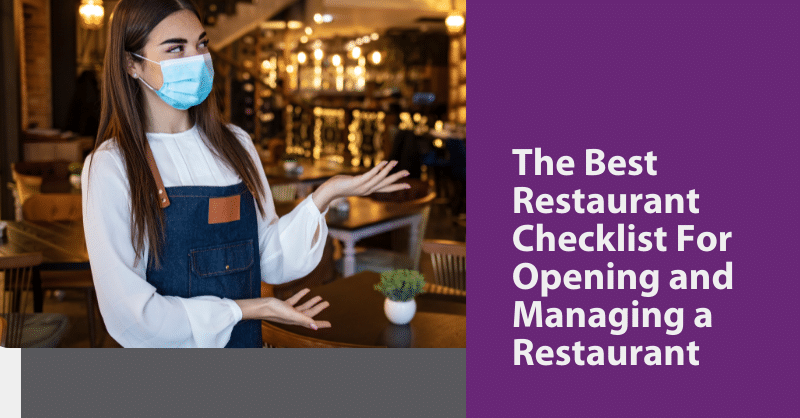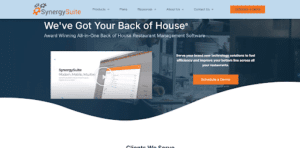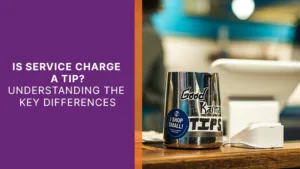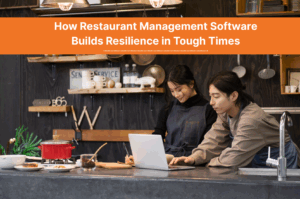Updated on: February 6, 2025
So you’re thinking about starting a restaurant. That’s great! It can be one of the most rewarding undertakings but also one of the most difficult. Opening and managing your own restaurant is taxing financially, physically, mentally, and emotionally. If you have the right plan and know the steps to take, getting your restaurant up and running and serving customers daily can be invigorating and fulfilling.
Make no mistake, opening a restaurant and taking care of all the restaurant operations are very challenging. Even if everything goes perfectly, starting and running a restaurant is no small feat. Only 40% make it through their first year. If you try to open and manage a restaurant without a plan, you’re likely to start off on the wrong foot and you could be out of business before you even get off the ground. Planning is essential to be effective: We recommend building a restaurant opening checklist. It can make all the difference in sticking to a timeline for opening a restaurant. We’ve compiled a checklist for opening and managing your restaurant to simplify things. Take a look and start planning your dream diner today.
What is a restaurant checklist?
A restaurant checklist is simply a list of items to run through for a given aspect of your restaurant. In this case, our restaurant operations checklist is specifically for opening and managing a new restaurant. That said, several different checklists range from customer service checklists to cleaning checklists and restaurant opening and closing checklists. You can find restaurant checklist templates online if you’d like to build out more specific checklists, such as a restaurant closing checklist. Our broader, more comprehensive restaurant opening checklist will help you know what to think about when starting a new restaurant from scratch.
What is on the checklist for opening a new restaurant?
We want to help you open your new restaurant, so we’ve created overview restaurant checklist detailing each section. Here’s our broad opening a restaurant checklist:
- Conduct market research
- Develop a marketing plan
- Secure financing
- Sign a lease
- Get the necessary licensing and permits
- Create job postings
- Order supplies
- Get restaurant management software
- Determine food production and inventory needs
- Order the food
- Do a trial run with friends and family
Conduct market research
The first item on your restaurant checklist is good old-fashioned research about your local market. Some of the best market research starts by being observant. Pay attention to your local area and see which restaurants have been successful. Is there anything they’re doing that you can replicate? Is there a specific type of food or restaurant your city doesn’t have yet? Maybe you could be the first to market.
Another key consideration is the size of your market. Are enough people in the city to support your restaurant, or do you live in a small town? Also, ensure you conduct enough surveys and focus groups to understand what type of food customers like. How much should you charge? Compare what other restaurants charge, determine who your competitors are, assess your costs and needed profit from menu items, and decide how much you’ll charge.
Develop a marketing plan
Once you’ve done your research, you should narrow in on the type of restaurant you’ll open and have a good idea that it will be well received. People won’t come to your restaurant unless they know about it. This is where marketing comes in.
How will you spread the word? Can you visit local events and hand out flyers? Will you serve samples? Will you hold a grand opening? How will you leverage social media? These are all things to consider. Ultimately, the best marketing comes from satisfied customers. Do what you can to amplify their voices online and through word of mouth.
Secure financing
You have the vision and an awesome marketing plan, but you must ensure you have enough money to get everything up and running. Often, you’ll need to secure financing, which can be a bit of a process. So, ensure you get this set up well before opening your restaurant.
Even if you plan to pay your startup expenses out of pocket, it’s a good idea to establish a separate business bank account to keep your business finances separate from your personal ones. Also, setting up a business account will make it easier to get business loans should you need them at any point. Remember that investing in your company early is important. Don’t be afraid to spend money to advertise and create a great guest experience. Money spent upfront could result in great returns down the road.
Sign a lease
You can’t have a restaurant without a restaurant. It sounds simple, but finding a property to lease or buy early in the game is critical. Don’t try to rush this. Location is very important, so be sure to consider that. Also, think about the layout and size of the building. Will it serve your purposes?
Don’t rush into something, but also understand your budgetary limitations. If you establish a successful restaurant and you outgrow the space, you can aim to move to a bigger one. On the other hand, if you overpay for a large space and never build a big enough customer base, you’ll wish you’d started smaller.
Get all necessary licensing and permits
You need a fair number of licenses and permits to run a restaurant. They include the following:
- Signage permits
- Health permits
- Business license
- Liquor license (if necessary)
Keep in mind that every state and city may have different permits and licenses. Check with your local Small Business Administration and city officials to ensure you have the necessary permits and licensing to remain compliant. Start early because you never know how long it will take to get these. In most cases, it’s quick, but depending on the state and city, you could experience longer wait times.
Create job postings
So you’ve got your space and your permits. Next, you need restaurant staff. Take time to determine how many cooks you’ll need. Will you need servers? What about a host or hostess? Hire enough people to meet your anticipated demand, but don’t overhire too early. You may need to make adjustments to this as you grow. Be thorough with your job postings and hire candidates to build your restaurant brand and provide excellent customer service.
Order supplies
You need stuff to cook with and eat on. Think about this early. Determine your budget and order enough to fill the expected demand.
Get restaurant management software
How are you going to track orders? Inventory? Staff time and attendance? This is all critical. It’s easiest to stay on top of things with a restaurant management software solution. That’s where we come in.
Determine food production and inventory needs
How much inventory will you need to have on hand? What ingredients are most important? Are there specialty ingredients that require more time and planning to secure? Take this all into account. Also, think about how long it will take to make the food. Is there some food you can prepare in advance? For instance, if you’re running a Mexican restaurant, could you prepare the salsa the night before and store it in the fridge? You’ll need to think about things like this.
Order the food
Once you know the food items you’ll need, be sure to order it. Shop around to find the best prices, but don’t skimp on quality, especially when it comes to your signature dishes. Be sure you have enough. There’s nothing worse than running out of a certain food item and having a bunch of disgruntled customers. Preparation is key.
Do a trial run with friends and family
A pre-grand opening is a great idea before you’re ready for your big grand opening. Invite friends, family, and friends of friends. Serve them like you would any other patrons. Pretend as if it’s just a normal day in the restaurant. This will help you uncover any rough spots and make the necessary changes before the real grand opening.
Be patient and enjoy the journey
As you prepare to open and manage your restaurant, you’ll surely discover more items pop up than just the essential ones we’ve mentioned. For example, you’ll want to have a system for food preparation and ensure a high standard of food quality. There always are. That’s the nature of the restaurant business—it’s unpredictable.
Learn to find joy in the journey, and don’t be too rigid with your plans, so you can’t make course corrections where needed. Mistakes will be made, and tough times will happen as you run through the daily operations of owning a restaurant. Just be ready for a wild ride and hold on. It’ll be worth it when you succeed and serve happy customers daily.






